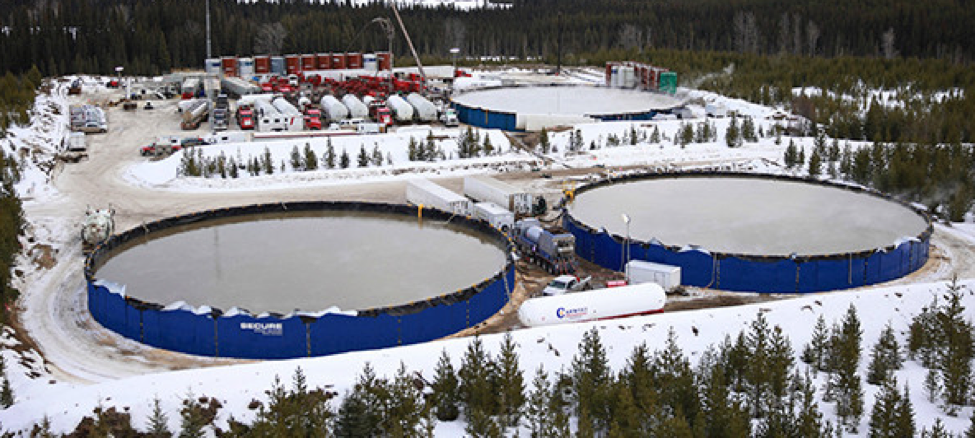Surface discharge of flowback fluid is not permitted in Canada, which means that it is not introduced into surface waters, such as lakes and streams. Flowback fluid may be recycled for further hydraulic fracturing, or disposed by injection into deep subsurface formations, through a licensed disposal well.
There are multiple steps to properly handle hydraulic fracturing fluid. First, operators reuse flowback fluid for other wells, if possible. This reduces overall use of freshwater and reduces the amount of recovered water and chemicals that must be disposed of and reduces costs for the producer company.
Second, flowback fluid is stored in tanks or lined storage pits until it is disposed of in deep injection disposal wells that are fully regulated.

Source: Higher Materials
Industry believes in water protection and using water responsibly is a priority. Examples of how it does this includes recycling flowback water from fracking operations, use of saline groundwater or lower quality non-saline water (that is not fit for human consumption), and use of recycled municipal wastewater. About 30 per cent of the water used for fracking in British Columbia comes from these non-freshwater sources.
